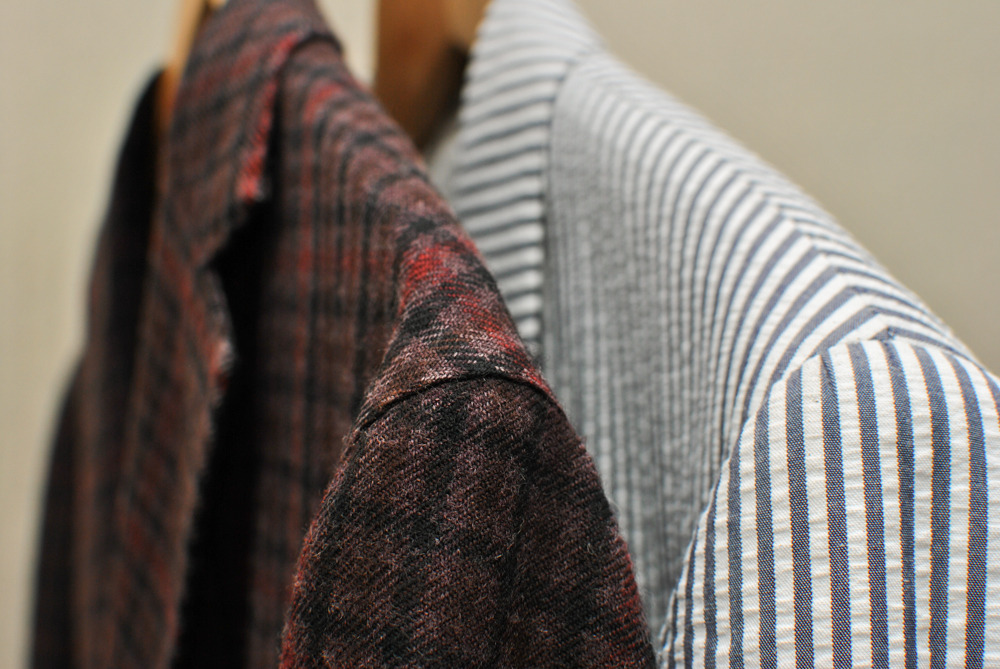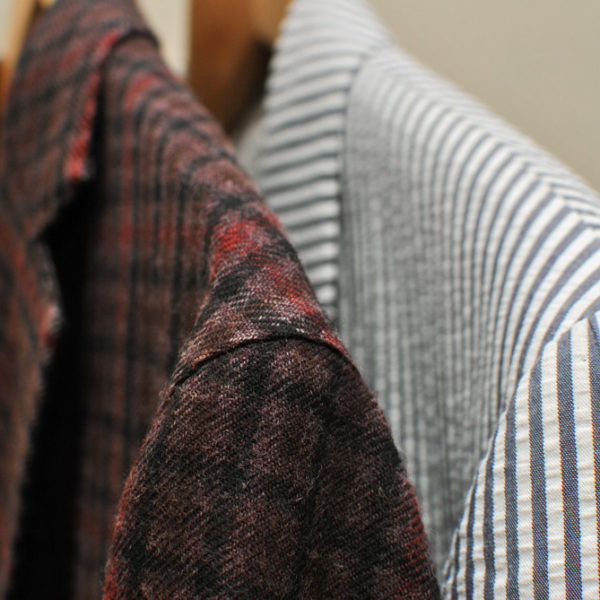
Rigidity about the beginnings and ends of seasons for clothing denies the variability of our climate. Labor Day has come and gone, and meteorological summer ends in a few days, but even though I have an itch for scratchier fabrics, if the weather calls for it I’ll still wear linen in September. Still, it’s about time to give up and put away the seersucker and linen or the rust tweeds in the closet will just get rustier. Storage of seasonal clothing is like re-sorting a record collection for music nerds enthusiasts–to dabblers it’s a chore but to the truly dedicated it can be deeply satisfying. Derek put together a helpful to-do list for seasonal storage a couple of years ago, and it’s worth revisiting his tips as you put away your summer stuff:
- Wash or dry clean your clothes before you store them. This ensures that insects aren’t packed away with your clothes and that any food bits, which can attract insects, will be gone as well. I even give my clean clothes a good shake before they’re actually stored.
- Check the pockets to make sure they’re empty. I also zip up the zippers and button the buttons, just to make sure things are in good order.
- Get muslin or canvas garment bags for your trousers, jackets, and suits. I’ve found that these work better than plastic since they allow your clothes to breathe while keeping the bugs at bay. It’s also recommended that you use hangers with molded shoulders for your jackets and suits. Many people believe that this helps your garments keep their shape, though I’ve read credible sources cast doubt on this claim. Still, I’m not testing the matter with my clothes, so I play it safe.
- For sweaters and shirts, store them in plastic bins with lids. Drill a few holes into the lid so that air can circulate. Failing to do so can create moisture, which in turn can cause mildew. Pack them away with the heaviest items on the bottom, and be sure not to overstuff things, otherwise you’ll ruin the fibers. I also wrap my favorite pieces in acid free tissue paper, but this isn’t terribly necessary.
- Put cedar balls or lavender in along with your clothes to deter bugs.
- Choose a storage space that is cool and dry. If you don’t, your clothes may develop mold, and if they do, they will have a smell that will be very, very difficult to get out. I’ve had clothes permanently ruined from being stored in damp areas, so be careful. Once you’ve chosen a place, vacuum and clean it out before your store your clothes there.
- If you have silverfish in your home, and you’ve put holes in the lids of your storage bins, put those bins off the floor. This will lower the likelihood of having silverfish snack on your garments.
I’d add a few more things:
- Take the opportunity to cull your wardrobe. Clothing that is truly worn out should be trashed; stuff that no longer fits you or that you no longer need can be ebay’d, consigned, or donated. Bonus: room for more stuff.
- Mothballs still exist; don’t use them. They’re toxic and they smell it. Lavender and cedar are ideal. You can buy cedar sachets or make them–if you don’t need them to be photogenic you can find spice bags at kitchen or hardware stores.
- If you (like me) weren’t as careful as Derek when putting away your fall/winter stuff last year: (1) immediately clean any tailoring or sweaters you didn’t clean pre-storage; (2) steam wrinkles out of suits that got creased in storage, but don’t overdo it–if it’s really wrinkled, get it professionally pressed.
- If you’ve stored stuff poorly in the past (stretched out knits, left suit jackets on wire hangers for months), now’s the time to repent and do right by your clothes.
-Pete
